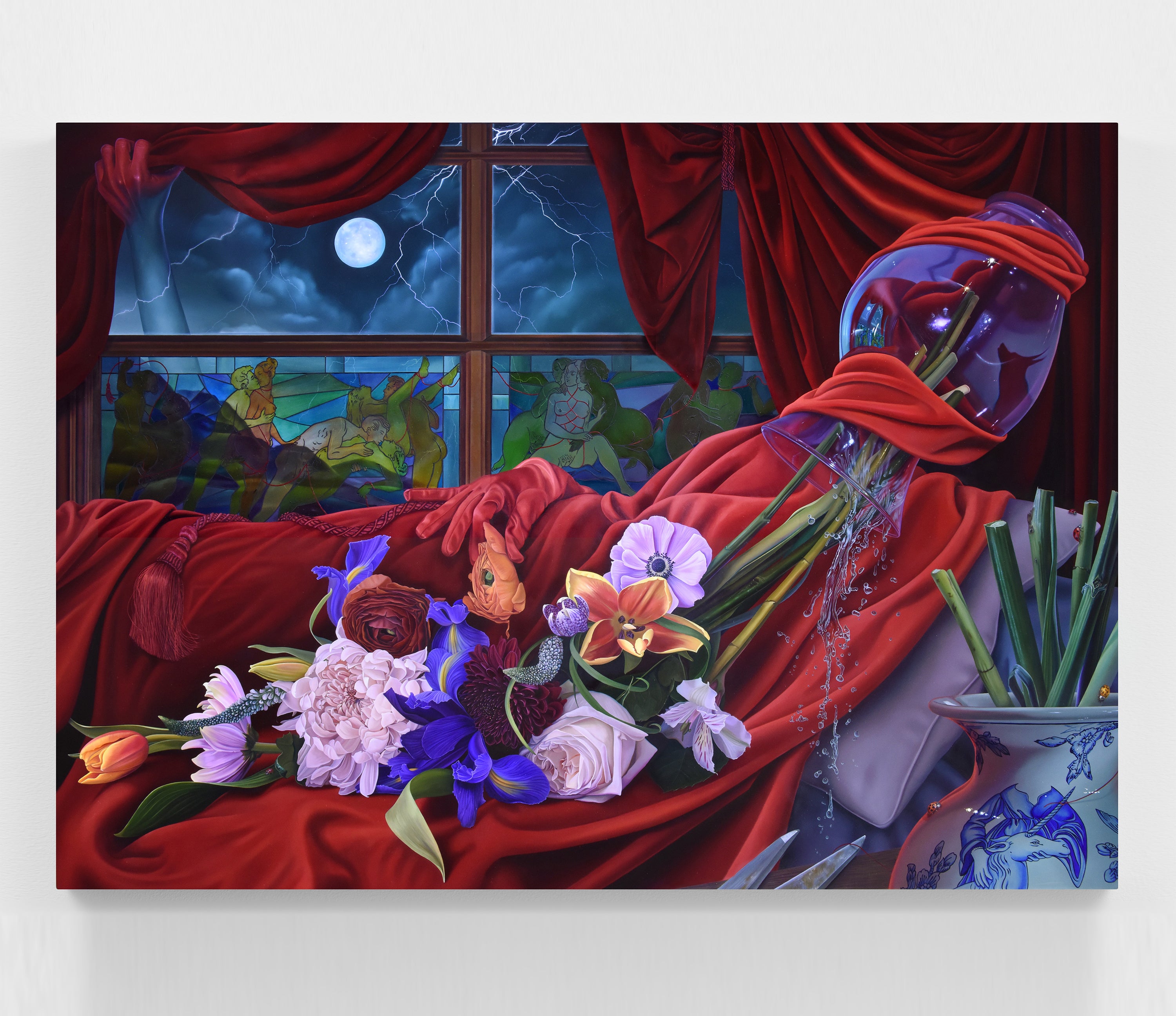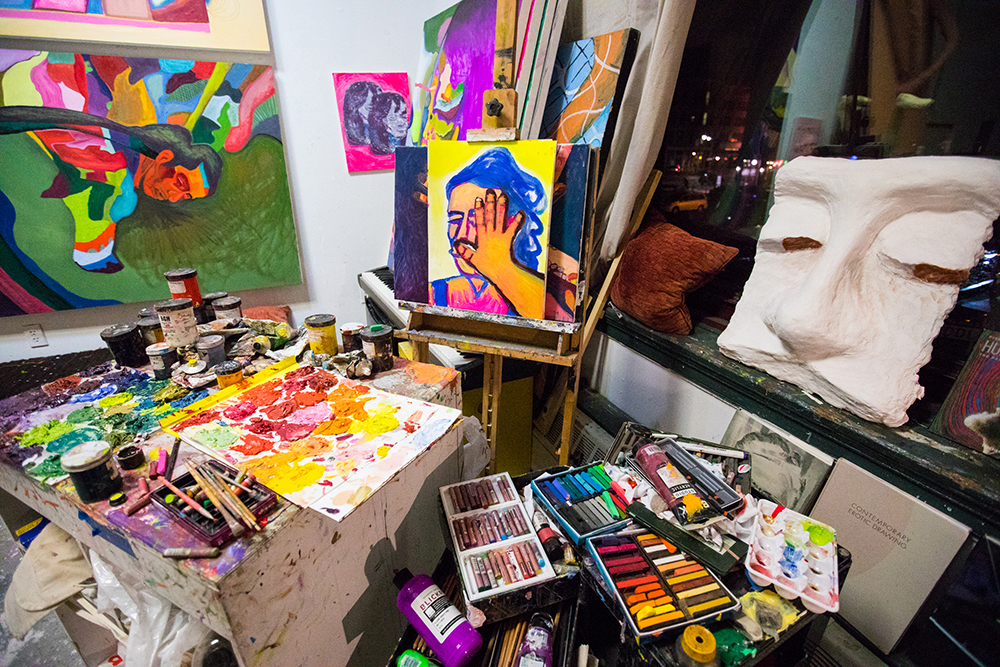
"Under the Rose"
Anat Ebgi is pleased to announce Under the Rose, an exhibition by Marisa Adesman. This is Adesman’s first solo exhibition in New York and second with the gallery. On view at 372 Broadway in Tribeca from June 27 through August 8, with an opening reception on Friday, June 27 from 6-8pm.
The seven paintings that comprise Under the Rose are an exquisite performance of dramatic tension: stillness under pressure, the moment before escape, the suspenseful beat before a trick is resolved. Adesman’s paintings represent the culmination of over two years’ worth of work. Narratively rich and formally detailed, the exhibition demands in-person viewing. Smooth and luminous, built through hundreds of layers of glazing, Adesman achieves a glass-like surface that recalls Dutch still life painting rendered with a contemporary slickness. Her obsessive technique captures hyperreal droplets of blood, stained glass, delicate petals, ripe fruit, and soft flesh with meticulous focus.
Adesman’s work draws on the tradition of Vanitas, though the logic is theatrical rather than moral. Inspired by painters such as Raphaelle Peale and informed by surrealism and ancient Greek mythology, these paintings present predicaments, tricks, and visual spells. Where there is emotional logic, Adesman manipulates expectations; where there is implicit violence, she tempers the scene with elegance. Narrative is complicated by contradiction.
The exhibition’s title, Under the Rose, derives from the Latin phrase sub rosa, an ancient symbol of secrecy. In Roman banquets, a rose would be suspended above gatherings to signal confidentiality, a tradition later echoed in Renaissance parlors and domestic interiors. Across these paintings, Adesman transforms domestic spaces—historically associated with passivity, beauty, or feminine restraint—into a stage for private disobedience, erotic tension, and emotional precision. The rose, long a symbol of love, purity, suffering, and resistance, becomes a cipher for everything that transpires behind closed doors. These paintings are both witness and participant in a theater of secrecy, where rituals unfold unseen and beauty masks transformation.




